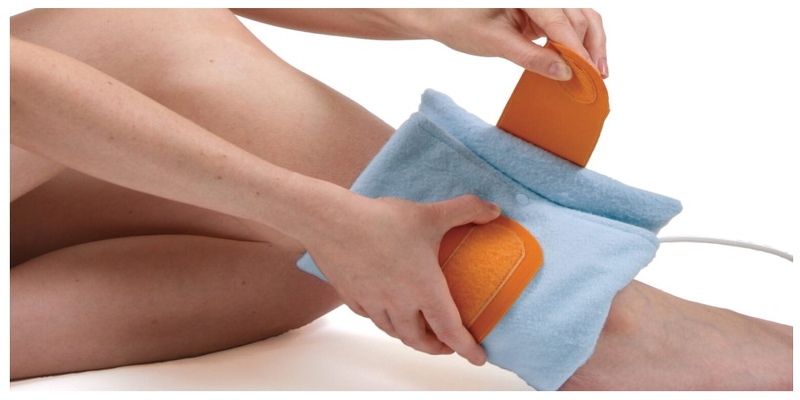You can get musculoskeletal pain at any age. There could be various causes for it, be it injury, joint dislocation, sprains, or fractures. If left untreated, it can cause severe bone and muscle issues.
But you might be confused between heat or cold for chronic musculoskeletal pain. Which one is better? Both heat therapy (Thermotherapy) and cold therapy (Cryotherapy) are very effective for immediately relieving pain.
You must know when and how to use heat or cold therapy to increase effectiveness. The choice of therapy depends on the type of injury and personal choice.
This article discusses how we can use hot or cold therapy to relieve musculoskeletal pain. Lets get started!
Understanding Chronic Musculoskeletal Pain Its Symptoms and Causes

Our musculoskeletal system comprises bones, joints, skeletal muscles, tendons and ligaments. Any injury or fracture at these sites could lead to intense musculoskeletal pain. It could result from some injury, sprain, or other medical condition. Some major causes that lead to musculoskeletal pain include:
- Bone or muscle injury
- Bone fracture
- Muscle sprains
- Strain injuries
- Muscle spasms and cramps
- Gout
- Myopathies
- Spinal stenosis
- Other diseases like arthritis, osteomyelitis
This pain can negatively affect your daily life activities. So, you should never ignore the symptoms and immediately seek treatment or try home remedies like heat or cold therapy.
- Trouble moving because of stiffness or tightness
- Pain that spreads along muscles or nerves
- Less movement ability
- Swelling
- Feeling numb or tingly
- Muscle spasms
- Constant pain even when not moving
- Tiredness
- Headaches
If you experience any of these symptoms, dont ignore them. It could be an alarming sign of a serious medical condition.
The Role of Heat Therapy in Musculoskeletal Pain

Heat therapy, also known as Thermotherapy, is often the first option for the treatment of chronic musculoskeletal pain. Heat utilization helps reduce aches by increasing blood flow to the pain site.
It relaxes muscles and reduces muscle pain, stiffness, or spasms. It also stops lactic acid from building up in muscles, which can cause aching.
Types of Heat Therapy
There are two types of therapy: dry heat therapy and moist heat therapy.
- Dry therapy includes the usage of heating pads or applying heat directly to the pain site.
- Moist therapy includes hot baths, moist heating pads, or the use of steamed cloth on the main site.
Both delivery methods are good, but studies show that moist heat penetrates deeper, works slightly better, and is safer for the skin. It also works well over a larger area compared to dry heat packs.
How to Do Hot Therapy?
Using heat therapy is effective for treating aches. This can be done by using a heating pad on the painful spot. Some heating pads have wet inserts for moist heat transfer. Another option is to soak in hot water or a hot water bath to relieve aching.
If you have pain in your hands or feet, consider using a warm paraffin wax treatment. However, you need to be cautious when using this method, as it can be riskier. Heat packs are also available in the market and are designed for use on specific areas like the neck, arms, knees, or elbows.
Safety Tips for Using Heat Therapy
- Heat therapy should be applied for 15-20 minutes at a time. (Usually, heat is applied for a bit longer15-20 minutes is more common).
- It should be warm, not hot, to avoid skin burns.
- Be cautious if you have neuropathy or conditions that affect temperature sensation.
- Avoid using heat on open wounds or rashes.
- Use a cloth to prevent burns.
- Do not fall asleep with any heat source on the pain site.
The Role of Cold Therapy in Musculoskeletal Pain

Cold therapy, also known as Cryotherapy, works by narrowing blood vessels and capillaries, which move blood away from the injured area. This helps decrease swelling and relax muscles. Cold therapy can also lessen suffering by slowing down the speed at which pain signals travel.
Cold therapy helps relieve discomfort temporarily by reducing nerve activity at the site of inflammation and pain.
How to Do Cold Therapy?
The most common way of using cold therapy is to soak the pain area in cold water for some time. The water should not be too cold. You can also use an ice pack or chemical pack for this purpose. Another way is to soak a washcloth in cold water for some time and then use it as a cold compress to relieve pain.
Safety Tips for Using Cold Therapy
- Apply a cold compress for 10 to 15 minutes at a time.
- Take a 10-minute gap between each cold compress for better results.
- Watch for skin changes like frostbite, hives, blisters, or purple skin.
- If you experience pain or burning, stop cold therapy and use a cloth barrier between the cold and your skin.
- Avoid sleeping with a cold pack on.
Heat or Cold Therapy- Which One is Better?
Both heat and cold therapy are very effective in removing musculoskeletal pain. Heat therapy relaxes muscles and boosts blood flow, which is good for long-term aches or stiffness.
On the other hand, cold therapy lowers swelling and numbs intense pain, which is perfect for new injuries. Heat is excellent for constant muscle tension, while cold is best right after an injury.
People have different preferences; some like warmth in the heat, and others prefer cold sharpness. The decision is based on the type of injury and personal preferences.
The Bottom Line
The article discusses the effectiveness of therapies like heat or cold for chronic musculoskeletal pain. Heat therapy effectively treats pain by increasing blood flow to the pain site and relaxing muscles. Cold therapy is effective for reducing swelling and pain after new injuries.
Although both types of therapies are effective in removing muscle pain, most people prefer thermotherapy because of its immediate and effective results. The choice depends on personal preferences and experiences. Take advice from a medical expert when choosing the right one.







